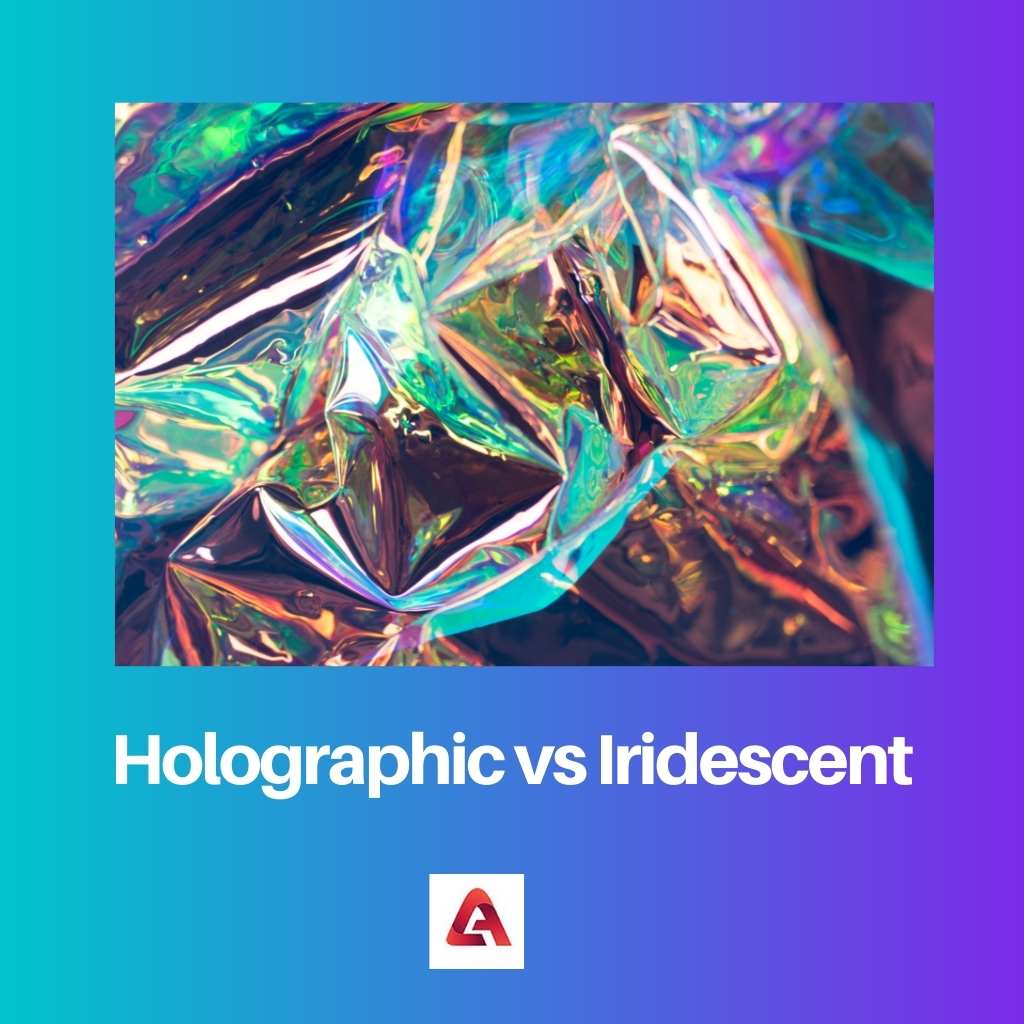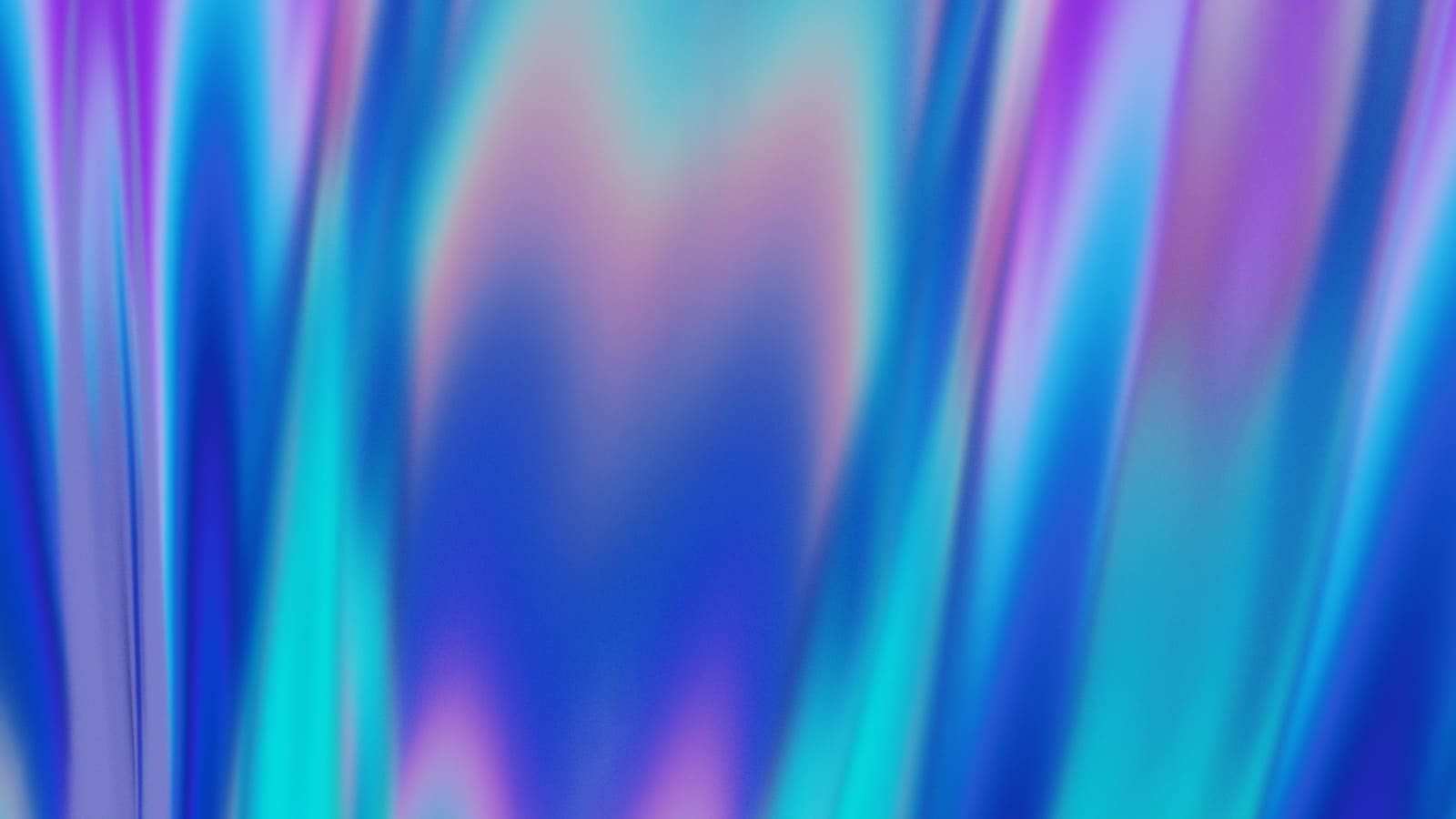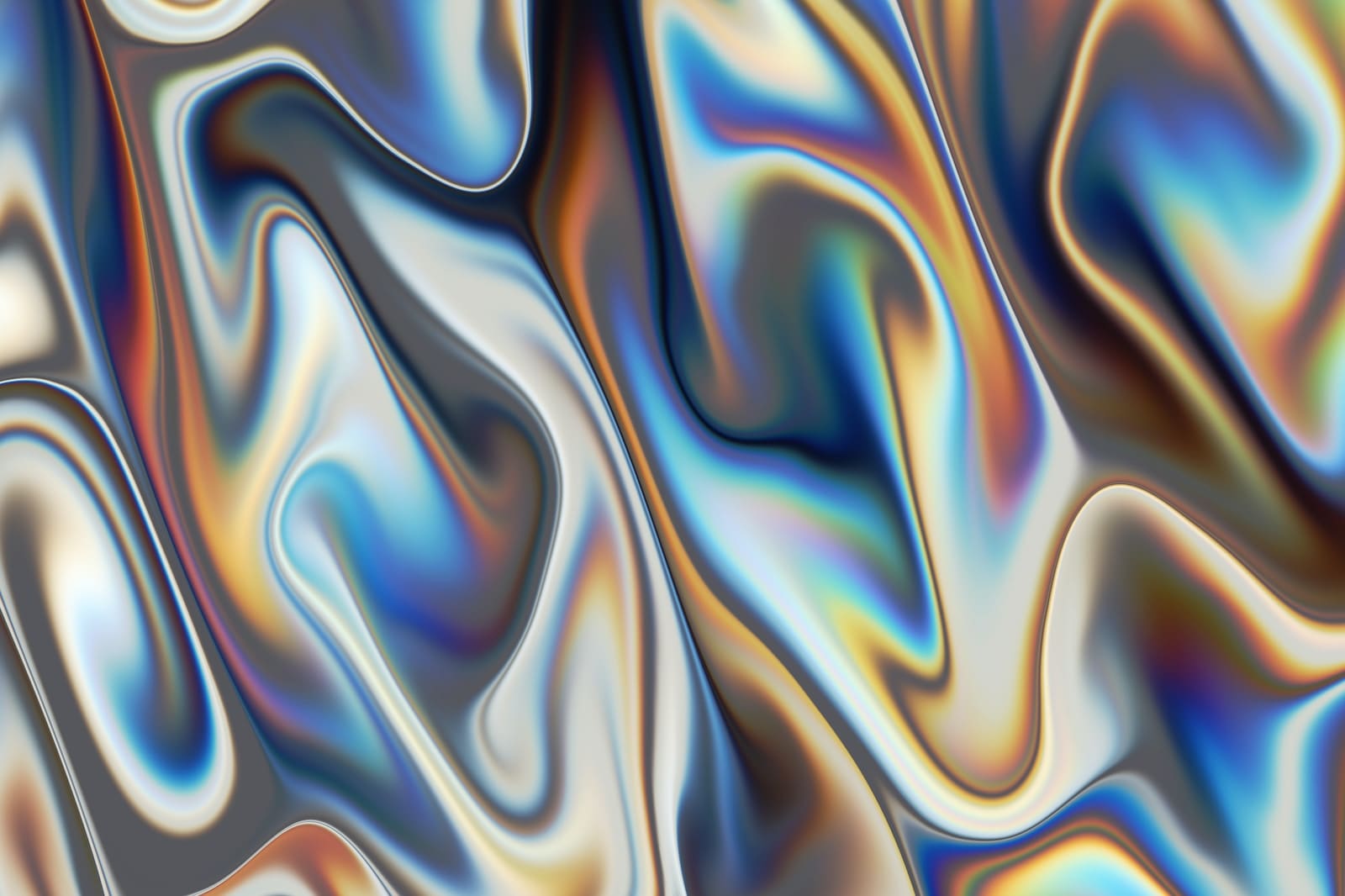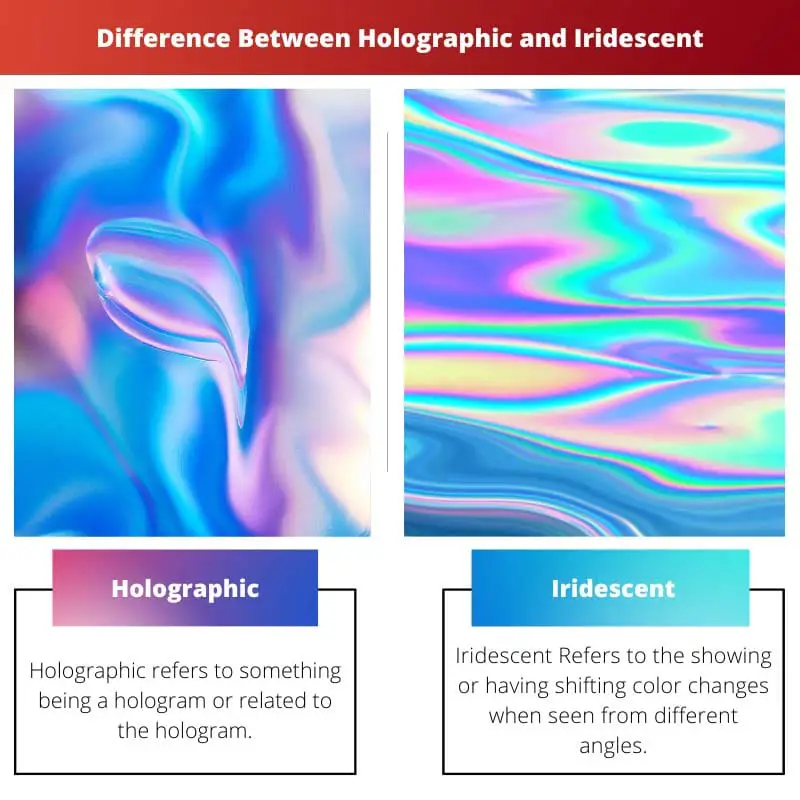Holographic and iridescent are very popular in the fashion and makeup industry as sparkling and glittery colors are nowadays trendy in fashion.
These are two types of illuminating light that look almost the same. People tend to use these two terms alternatively, but some prominent differences make holographic and iridescent different from each other.
Key Takeaways
- Holographic materials create three-dimensional images using light diffraction, while iridescent materials display shifting colors based on viewing angle and light.
- Holographic effects require specific light conditions to be visible, while iridescence occurs naturally in various lighting situations.
- Holography involves advanced technology and precise manufacturing, while radiance can be found in nature or created through simple processes.
Holographic vs Iridescent
Holographic materials are materials that use diffraction to reflect light so that it creates a three-dimensional effect, like a rainbow. Iridescent materials have a surface that looks like it changes color as the angle of view or lighting changes, creating a shifting and shimmering effect.

Holographic refers to being a hologram or relating to the hologram. A hologram is a 3D image that is created with the help of photographic projection.
Holographic is a truly free-standing and 3D image, unlike virtual reality or 2D pictures on a 2D computer display, that does not require a special viewing device.
Iridescent describes something that changes color gradually when it is viewed from a different angle. Newton first observed that it happens by optical interference.
The colors are produced not by light absorption or selective reflection, rather by the characteristics of light diffraction. Some instances of iridescent objects are butterfly wings, soap bubbles, seashell nacre, and so on.
Comparison Table
| Parameters of Comparison | Holographic | Iridescent |
|---|---|---|
| Definition | Holographic refers to something being a hologram or related to the hologram. A hologram is a 3D projected image of someone or something. | Iridescent Refers to the showing or having shifting color changes when seen from different angles. |
| Nature | Man-made. | Natural phenomenon. |
| History | In the late 1940s by Dennis Gabor, a Hungarian-British physicist. | In the 9th century. |
| Colour reflection | Shows more colors that have wavelengths. | Shows more primary colors. |
| Usage | Military aping, makeup, Magnetic Resonance Imaging, holographic projections used for concerts, security labels, Digital storage discs like DVDs and CDs. | Makeup, cellophane, plastic clothing. |
What is Holographic?
Holographic is related to holograms which refer to a photographic album retaining light from being sprinkled from a surface without the help of specific lenses.
There are different types of holographic techniques available, such as security labels with holographic rainbow.
Holographic technology enables a field of light to be recorded and then reconstructed when the original field of light is no longer exists, for the absence of the original objects.
This technology is similar to sound recording, where a field of sound developed by vibrating matter such as vocal cords or musical instruments, is encoded in a way that it can be reproduced later without the help of the original matter.
A Hungarian-British physicist named Dennis Gabor invented holographic technology in the late 1940s while working in the UK researching optical physics.
He was making new types of cathode and electron multipliers named ray tubes. He was continuously experimenting with projection and photography which influenced his invention.
In 1971 he won the Nobel Prize in Physics for his invention of holography technology. Holographic technology is also presented in the makeup industry.
Holographic makeup is glittery which reflects all the seven colors of the rainbow and mostly comes in silver or white color.
Linear nail polish is a popular type of holographic makeup kit, which is a non-chunky, smooth formulation with very small and fine particles.

What is Iridescent?
Iridescent refers to the gradual color change of a particular surface when it is viewed from different angles. The word iridescent came from the Latin word iris which means rainbow.
Many other properties like luminescent, pearlescent, and opalescent can do the same thing. They all follow the same color-shifting principle. There are two ways following which iridescent effects are work- diffraction and interference.
Diffraction refers to the full range of rainbow colors that are shown from every angle, and interference refers to a small selection of shifting of color based on the available light.
A slick of oil on water or puddles or a soap bubble is a good example of iridescent. Another good example of iridescent can be seen in the male peafowl’s feather.
Researchers have shown that the shining color effects from the feathers of birds are the result of the molecular structure in the feathers, not for the color of the feather.
The first evidence of man-made iridescent effect dated back to Ninth-century ceramic pottery, called lusterware. This represents a Middle Eastern color effect technique.
Various types of lusterware use this effect with the help of platinum pieces, gold, and salts. Another significant pottery evidence with this technology is a 15th-century Hispano-Moresque ware.

Main Differences Between Holographic and Iridescence
- Holographic refers to something being a hologram or related to the hologram. A hologram is a 3D projected image of someone or something, on the other hand, Iridescent refers to the showing or having shifting color changes when seen from different angles.
- The holographic technology was invented in the late 1940s by Dennis Gabor, a Hungarian-British physicist. But iridescent was discovered much earlier. The first evidence of man-made iridescent effects was found in the 9th-century pottery work.
- Holographic shows more colors that have wavelengths, but iridescent mostly shows primary colors.
- Holographic is a man-made creation, on the contrary, iridescent is a natural phenomenon. Iridescent also can be created.
- The usage of holographic technology can be seen in Military aping, makeup, Magnetic Resonance Imaging, holographic projections used for concerts, security labels, Digital storage discs like DVDs and CDs, whereas, the usage of iridescent are Makeup, cellophane, plastic clothing.




